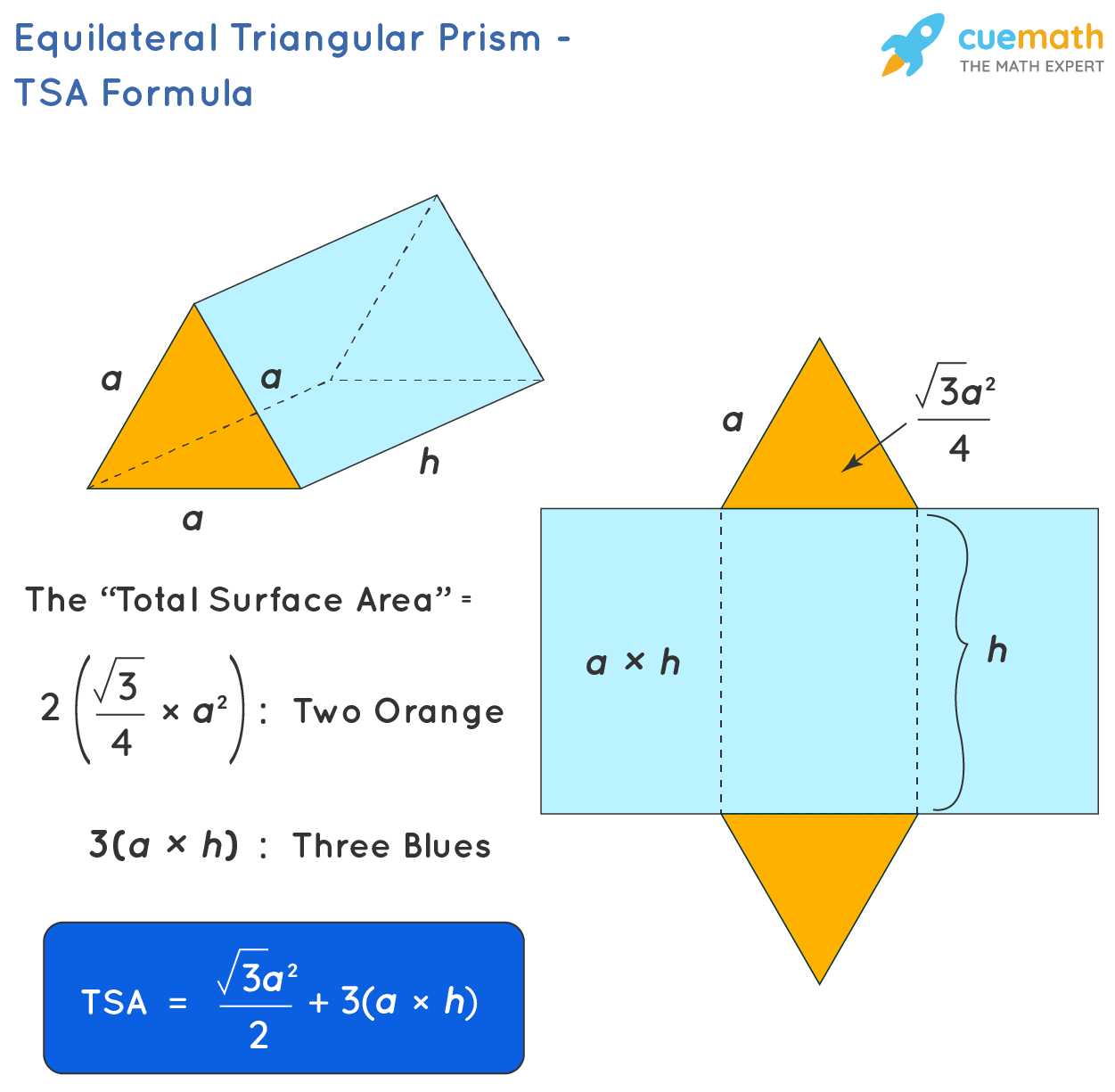
We see this in the formula for the area of a triangle, ½ bh. It is important that you capitalize this B because otherwise it simply means base. Notice that big B stands for area of the base. To find the volume of a prism, multiply the area of the prism’s base times its height. Now that we have gone over some of our key terms, let’s look at our two formulas. Remember, regular in terms of polygons means that each side of the polygon has the same length. The height of a prism is the length of an edge between the two bases.Īnd finally, I want to review the word regular. Height is important to distinguish because it is different than the height used in some of our area formulas. The other word that will come up regularly in our formulas is height. For example, if you have a hexagonal prism, the bases are the two hexagons on either end of the prism. The bases of a prism are the two unique sides that the prism is named for. The first word we need to define is base.
Surface area of a hexagonal prism formula how to#
( Note: The h refers to the altitude of the prism, not the height of the trapezoid.Hi, and welcome to this video on finding the Volume and Surface Area of a Prism!īefore we jump into how to find the volume and surface area of a prism, let’s go over a few key terms that we will see in our formulas. ( Note: The h refers to the altitude of the prism, not the height of the trapezoid.) Find (a) LA (b) TA and (c) V.įigure 6 An isosceles trapezoidal right prism. Theorem 89: The volume, V, of a right prism with a base area B and an altitude h is given by the following equation.Įxample 3: Figure 6 is an isosceles trapezoidal right prism. Thus, the volume of this prism is 60 cubic inches. Because the prism has 5 such layers, it takes 60 of these cubes to fill this solid. This prism can be filled with cubes 1 inch on each side, which is called a cubic inch.


In Figure 5, the right rectangular prism measures 3 inches by 4 inches by 5 inches.įigure 5 Volume of a right rectangular prism. The volume of a solid is the number of cubes with unit edge necessary to entirely fill the interior of the solid. The interior space of a solid can also be measured.Ī cube is a square right prism whose lateral edges are the same length as a side of the base see Figure 4. Lateral area and total area are measurements of the surface of a solid. The altitude of the prism is given as 2 ft. The perimeter of the base is (3 + 4 + 5) ft, or 12 ft.īecause the triangle is a right triangle, its legs can be used as base and height of the triangle. The base of this prism is a right triangle with legs of 3 ft and 4 ft (Figure 3).įigure 3 The base of the triangular prism from Figure 2. Theorem 88: The total area, TA, of a right prism with lateral area LA and a base area B is given by the following equation.Įxample 2: Find the total area of the triangular prism, shown in Figure 2. Because the bases are congruent, their areas are equal. The total area of a right prism is the sum of the lateral area and the areas of the two bases. Theorem 87: The lateral area, LA, of a right prism of altitude h and perimeter p is given by the following equation.Įxample 1: Find the lateral area of the right hexagonal prism, shown in Figure 1. The lateral area of a right prism is the sum of the areas of all the lateral faces. These are known as a group as right prisms.

In certain prisms, the lateral faces are each perpendicular to the plane of the base (or bases if there is more than one). Summary of Coordinate Geometry Formulas.Slopes: Parallel and Perpendicular Lines.Similar Triangles: Perimeters and Areas.Proportional Parts of Similar Triangles.Formulas: Perimeter, Circumference, Area.Proving that Figures Are Parallelograms.Triangle Inequalities: Sides and Angles.Special Features of Isosceles Triangles.Classifying Triangles by Sides or Angles.Lines: Intersecting, Perpendicular, Parallel.


 0 kommentar(er)
0 kommentar(er)
